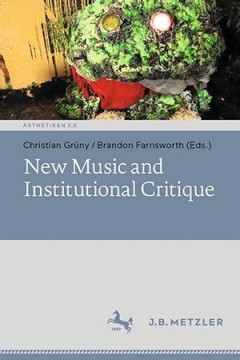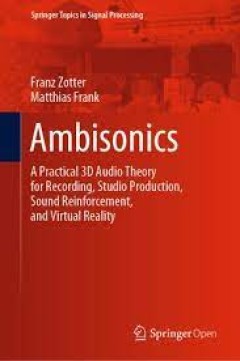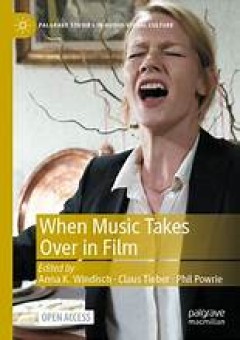Filter by

A God of Time and Space : New Perspectives on Bob Dylan and Religion
"This book is a collection of essays on Bob Dylan and religion. The eight scientific essays present new perspectives on the subject, aiming to elucidate the role played by religion in Bob Dylan's artistic output and in the reception history of some of his songs. Few would dispute the fact that religion or religious traditions and the use of religious imagery have always played an important r…
- Edition
- -
- ISBN/ISSN
- 978-1013294181
- Collation
- 239 hlm
- Series Title
- -
- Call Number
- -

A dictionary of Middle English musical terms
The work here presented is a definitive study of Middle English musical terms, arranged on a modified historical principle and based, as the bibliography will show, on essentially everything published in Middle English. Terms included in the study refer to the theory, the performance, the materials, and the forms of Middle English music. As in the OED and MED, but with more concentration on mus…
- Edition
- -
- ISBN/ISSN
- 978-0-253-04862-2
- Collation
- 655 hlm
- Series Title
- -
- Call Number
- -

A History of Spanish Piano Music
Although Spain has had a long tradition of keyboard music, A History of Spanish Piano Music is the first study of that rich heritage. Linton E. Powell surveys the lives and works of over 150 composers from the eighteenth century to the present and discusses the relevant schools of composition, the regional styles, and the effects of social and political developments on the music of Spain. The f…
- Edition
- -
- ISBN/ISSN
- 9780253051325
- Collation
- -
- Series Title
- -
- Call Number
- -

A Catalogue of 18th-Century Symphonies
A Catalogue of 18th-Century Symphonies makes possible for the first time a comprehensive view of one of the largest and most significant repertories in the history of music. Until now, no one has known for certain who wrote what, and hundreds of symphonies have been attributed in manuscript and printed sources to two or more composers. Under these conditions no reliable history of the symphony …
- Edition
- -
- ISBN/ISSN
- 9780253055491
- Collation
- -
- Series Title
- -
- Call Number
- -

Zheng: Eine lebendige Tradition
Das vorliegende Open-Access-Buch versteht sich als eine musikethnologische und kulturwissenschaftliche Studie über das Zheng – die chinesische Wölbbrett-Zither – innerhalb eines gesellschaftlichen Entwicklungsprozesses. Das Zheng ist heute ein sehr beliebtes und weithin sichtbares Musikinstrument in China. Viele Stücke sind überaus bekannt. Im offiziellen Kultursystem genießt es einen …
- Edition
- -
- ISBN/ISSN
- 9783662708170
- Collation
- XLIV, 226 hlm; ill., lamp.,
- Series Title
- -
- Call Number
- -

New Music and Institutional Critique
While institutional critique has long been an important part of artistic practice and theoretical debate in the visual arts, it has long escaped attention in the field of music. This open access volume assembles for the first time an array of theoretical approaches and practical examples dealing with New Music’s institutions, their critique, and their transformations. For scholars, leaders, a…
- Edition
- 1
- ISBN/ISSN
- 9783662671313
- Collation
- XIV, 205 ill; hlm
- Series Title
- -
- Call Number
- -

Music, the Avant-Garde, and Counterculture = Invisible Republics
This book studies how the complex relationship between music, the avant-garde, and counterculture challenges all sorts of boundaries. By exploring the avant-garde as a thoughtful inquiry into experimentation, creativity, and originality, we bring to the fore the "invisible republics" of culture, the ephemeral, the suppressed, and the unconformity of artistic and political undercurrents. Avant-g…
- Edition
- 1
- ISBN/ISSN
- 9783031695148
- Collation
- XXVI, 300 hlm; ill., lamp.,
- Series Title
- -
- Call Number
- -

Ambisonics : A Practical 3D Audio Theory for Recording, Studio Production, So…
This open access book provides a concise explanation of the fundamentals and background of the surround sound recording and playback technology Ambisonics. It equips readers with the psychoacoustical, signal processing, acoustical, and mathematical knowledge needed to understand the inner workings of modern processing utilities, special equipment for recording, manipulation, and reproduction in…
- Edition
- -
- ISBN/ISSN
- 978-3-030-17207-7
- Collation
- XIV, 210
- Series Title
- Springer Topics in Signal Processing (STSP, volume 19)
- Call Number
- 714 ZOT a

When Music Takes Over in Film
Audio-Visual Culture
- Edition
- 1
- ISBN/ISSN
- 978-3-030-89155-8
- Collation
- oer.unej.ac.id
- Series Title
- Palgrave Studies in Audio-Visual Culture
- Call Number
- -

Poesie – Musik – Übersetzung
Die Übersetzung von Kunstliedern ist ein reizvoller Forschungsgegenstand: In ihrer musikalischen Ästhetik vereinen sich zwei „heilige Originale“ – die Poesie des Textes eines namhaften Dichters und die Melodie eines angesehenen Komponisten. Angesichts der langen Tradition des Kunstliedes im deutschen Sprachraum ist die Verwendung des Deutschen in der Übersetzungspraxis von besonderem…
- Edition
- 1
- ISBN/ISSN
- 978-3-7329-8936-2
- Collation
- 210
- Series Title
- TRANSÜD. Arbeiten zur Theorie und Praxis des Übersetzens und Dolmetschens
- Call Number
- -
 Computer Science, Information & General Works
Computer Science, Information & General Works  Philosophy & Psychology
Philosophy & Psychology  Religion
Religion  Social Sciences
Social Sciences  Language
Language  Pure Science
Pure Science  Applied Sciences
Applied Sciences  Art & Recreation
Art & Recreation  Literature
Literature  History & Geography
History & Geography